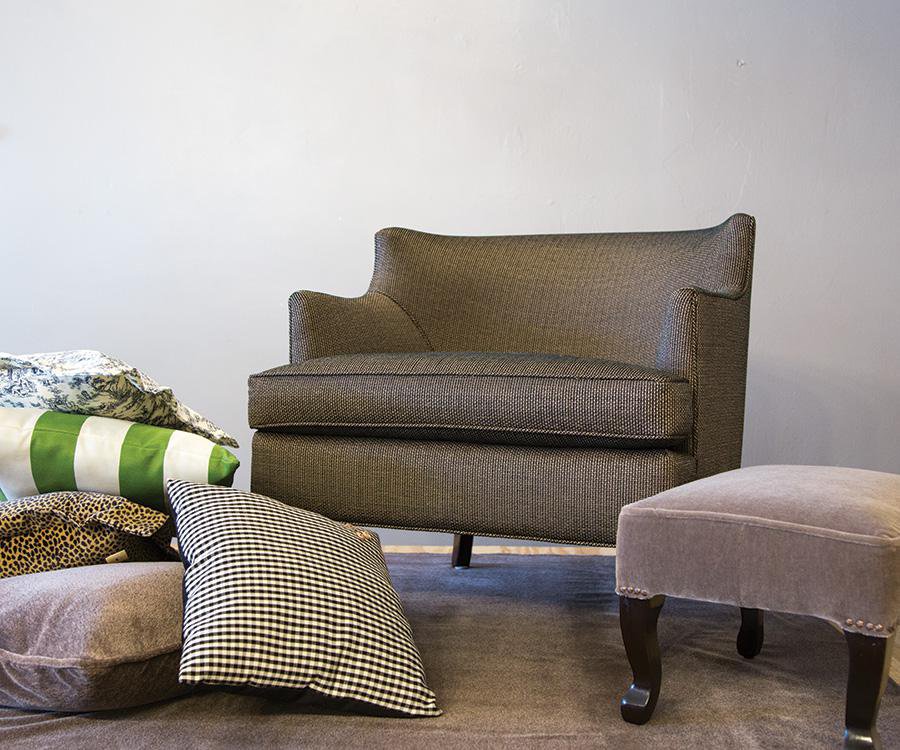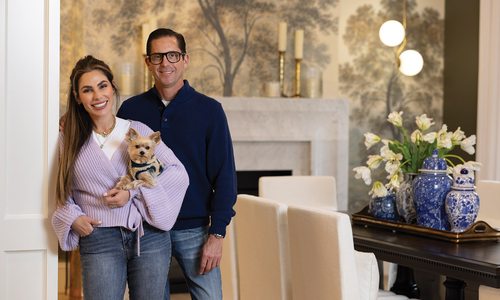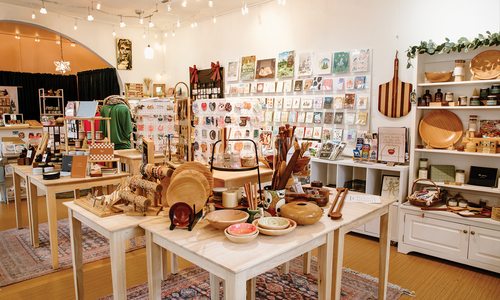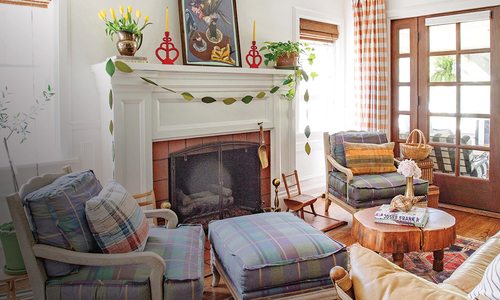Spaces
Old Furniture, New Life
Just because your favorite furniture doesn’t fit your current style doesn’t mean it has to go to the dumpster. There are folks in 417-land who can help transform your spaces with some fabric and a sewing machine.
By Jessica Covert | Photos by Heather Kane
Feb 2016

Maybe one of your living room chairs is looking a little worse for the wear. The cushions are worn down and the fabric’s faded and torn, but you can’t part with it—it’s been a favorite for years. This is a common problem, but luckily, you can breathe new life into it with new upholstery.
Furniture that’s comfortable or has value to a client is what Maggie Muller of Decorating Den Interiors usually recommends for upholstery. Muller also says she suggests upholstery to clients with pieces that were a little more expensive but no longer fit in their space.
Dining room chairs, side chairs, ottomans and other accent pieces are the ones clients want to spruce up most often, Muller says, but it all has to do with what best fits the room.
Nick Harper of The Pickwick Company says he often sees chairs come through the doors of his business, but he’s also worked with chaise lounges, sofas and more. As long as the frame is still intact on a piece, Harper says they
can redo it.
Costs for the process vary based on the type of fabric, the size of the piece and what structural fixes are needed (this includes things like product frame repairs). Choosing a fabric is one of the very first steps in the process. Harper recommends fabric based on what his customers need, and generally refers them to FM Stores Fabrics and More (2814 S. Fremont Ave., Springfield, 417-887-9244) to choose their own fabric and to help keep customers’ costs down. “A lot of people come in wanting to save money, so we try to do that any way we can,” Harper says.
Muller says she recommends polyester for upholstery jobs because it resists stains and is durable. She says cotton is another good option.
Once agreeing on the costs and details of the project, customers bring their furniture in, and it’s stripped down, any needed frame repairs are made, cushions are re-stuffed if needed, and the old fabric is removed.
Harper says the old fabric serves as a pattern for the new, which helps maintain the original look of the furniture. Once the new fabric is cut, it’s sewn and reapplied to the piece. Then, voila! Customers have a piece that’s tailored to their unique tastes, style and space.












